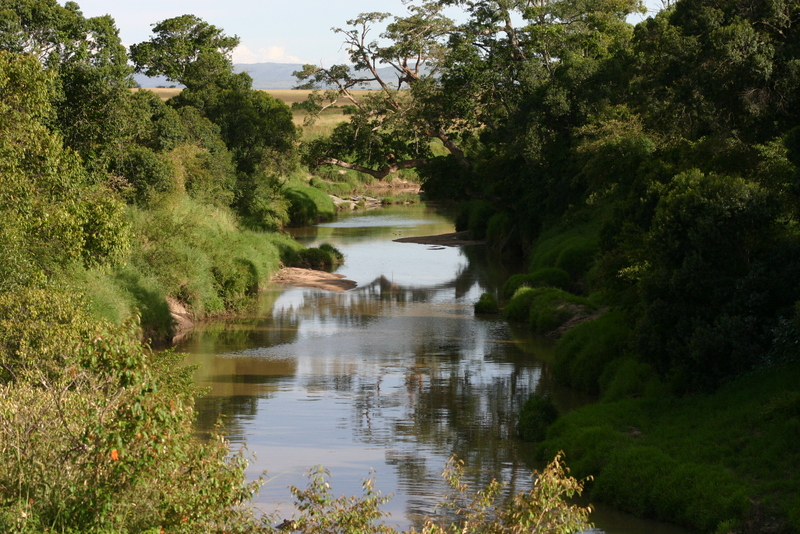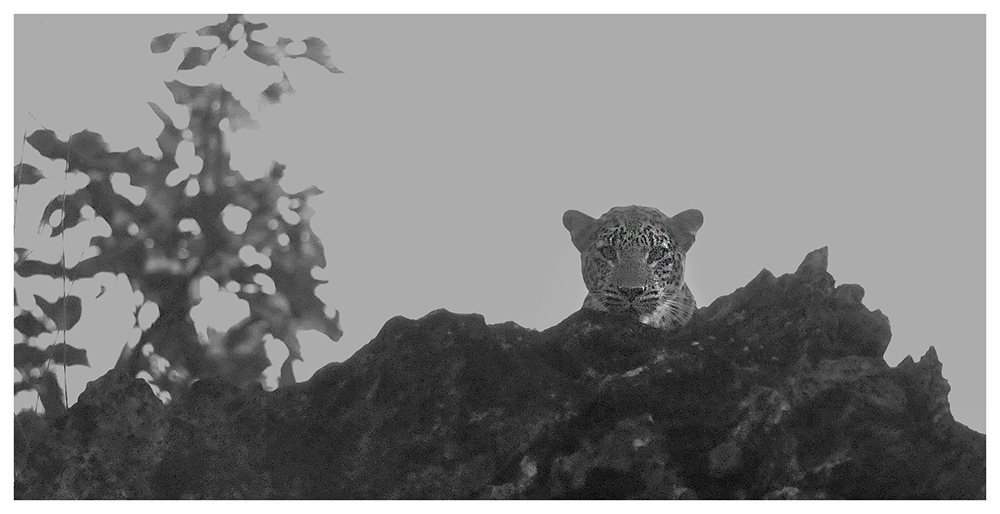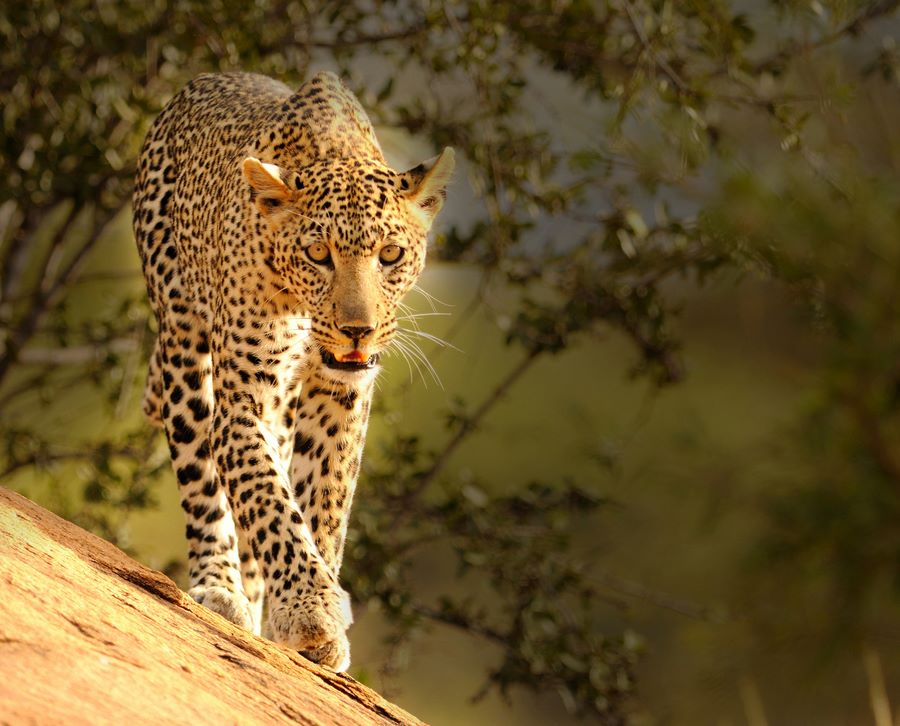 There are many reasons why I finally decided to dedicate a blog exclusively for leopards. There is just something so incredibly fascinating and mysterious about this big cat. Ever since my first trip to Africa this cat has had a hold on me. Don't get me wrong; I've always enjoyed watching leopards on television...But actually being in Africa searching for one is a complete different world in its own. Before I move on I have to be upfront and honest; I've never seen a leopard in the wild. I've been close multiple times (I'll discuss later) but have never had the pleasure of photographing one in the wild. That's where my good friend Dr. Munir Virani comes in. He's the Africa Programs director for The Peregrine Fund; an organization dedicated to conserving Birds of Prey worldwide. Although he might specialize in raptors, Dr. Virani runs into leopards quite often...Almost too much for my liking! He very kindly gave me permission to use a few of his stunning photographs for this very blog. Enjoy - Corbin
There are many reasons why I finally decided to dedicate a blog exclusively for leopards. There is just something so incredibly fascinating and mysterious about this big cat. Ever since my first trip to Africa this cat has had a hold on me. Don't get me wrong; I've always enjoyed watching leopards on television...But actually being in Africa searching for one is a complete different world in its own. Before I move on I have to be upfront and honest; I've never seen a leopard in the wild. I've been close multiple times (I'll discuss later) but have never had the pleasure of photographing one in the wild. That's where my good friend Dr. Munir Virani comes in. He's the Africa Programs director for The Peregrine Fund; an organization dedicated to conserving Birds of Prey worldwide. Although he might specialize in raptors, Dr. Virani runs into leopards quite often...Almost too much for my liking! He very kindly gave me permission to use a few of his stunning photographs for this very blog. Enjoy - Corbin
After graduating college in the fall of 2011 I decided to join a select few from Boise State University on a journey to Kenya. This is where I met Dr. Virani and where my leopard obsession began!
Everyone who goes on safari in Africa wants to see "The Big Five." This consists of the lion, buffalo, elephant, rhino, and the leopard. Unfortunately, the leopard happens to be one of the most difficult to spot (with exception to the rhino). Why? Leopards live a life of secrecy. They are primarily nocturnal and have to compete with larger predators including lions and hyenas. The best bet for the leopard is to remain hidden. (Not only to sneak up on prey but to avoid being killed by larger predators.)
The Masai Mara is ranked #1 in all of Africa when it comes to the best safari experience. Its high density of predators and prey make this area ideal for spotting all sorts of animals, including leopards. Many of the documentaries, films, and TV shows about big cats are filmed right in the Mara. These include Big Cat Diary (which Dr. Virani actually appeared) and Disney's African Cats. I'm a huge fan of both and tried looking everywhere in the Mara for a leopard. Doesn't that tree look perfect? It's just missing a leopard!
One of the reasons the Mara is one of the best places in Africa to view leopards is because many are accustomed to vehicles. Generation after generations grow up around tourists, cars, and cameras. With no pressure from hunting, these leopards have no reason to fear humans. Many can be found right out in the open! (Picture taken by Dr. Virani's young son Zayan.)
In other parts of the world leopards can sometimes be more difficult to find. Even so, Dr. Virani still runs into them! Pictured is an Indian Leopard (Panthera pardus fusca), a subspecies primarily found in India.
What fascinated me so much from talking to Dr. Virani and others who have encountered Indian Leopards are the slight differences from the African Leopards (Panthera pardus pardus). I'll always remember them telling me how sinister the Indian Leopards look. Or how longer their snouts are compared to the shorter snouts of the leopards found in Africa. Another interesting thing I learned is that they don't take to the trees as often as their African cousins. Why? Because in India these leopards don't have to compete as often with larger predators.
Back in Africa I was still searching relentlessly for the elusive leopard! This riparian habitat is ideal for them. Plenty of trees which provide cover and water which attracts prey.
One of my favorite crossings is properly named "Smelly Crossing" (due to the sulfur like smell). The main reason for my liking of this particular crossing is not the smell...But for the notorious sightings of leopards!
I soon learned there's a certain law of attraction in Africa. When you aren't intentionally looking for something it will appear. When you are looking intentionally you wont find a darn thing! This especially applies to leopards. While everyone in the Mara was waiting for the "famous wildebeest crossing", Dr. Virani happened to run right into a young female who had just killed an adult male impala!
This was the leopard everyone in the Mara was looking for. The famous "Olive." Named for her habit of hanging out in Olive Trees, this leopard was extremely accustomed to vehicles and gave many a rare glimpse into the life of a wild leopard. I first heard about Olive during my visit to the Mara in January 2012 and have been haunted by her ever since. When I returned to film in August/September 2012 I had one and only one mission: to finally see Olive in the wild! There were two separate occasions where I missed her and her cub by merely seconds. Talk about serious frustration! Unfortunately my wish would never come true; Olive was killed this September by what appeared to be by a lion. She was 13. To learn more about Olive and her legacy check out Paul Kirui's blog: http://paul-kirui.blogspot.com/
Olive might be gone but her legacy still lives on in the Mara. Her progeny will carry on her legacy for generations to come. In wake of the unfortunate news, Dr. Virani shared this tribute:
According to Derek and Beverly Joubert (Award-winning filmmakers, conservationists, and National Geographic Explorers in Residence) during the last 50 years leopard numbers have declined from 700,000 to as less as 100,000. In most countries in Africa it is still quite legal to hunt leopards. Other factors contributing to their decline is habitat loss, human conflict, and poaching. It's not just leopards; big cats are disappearing all over the world. To make a difference and learn more please visit http://animals.nationalgeographic.com/animals/big-cats-initiative/get-involved/
A special thanks goes out to Dr. Munir Virani and the Peregrine Fund for providing these fantastic photos and once-in-a-lifetime experiences in Africa. To learn more about their conservation efforts please visit http://www.peregrinefund.org/













